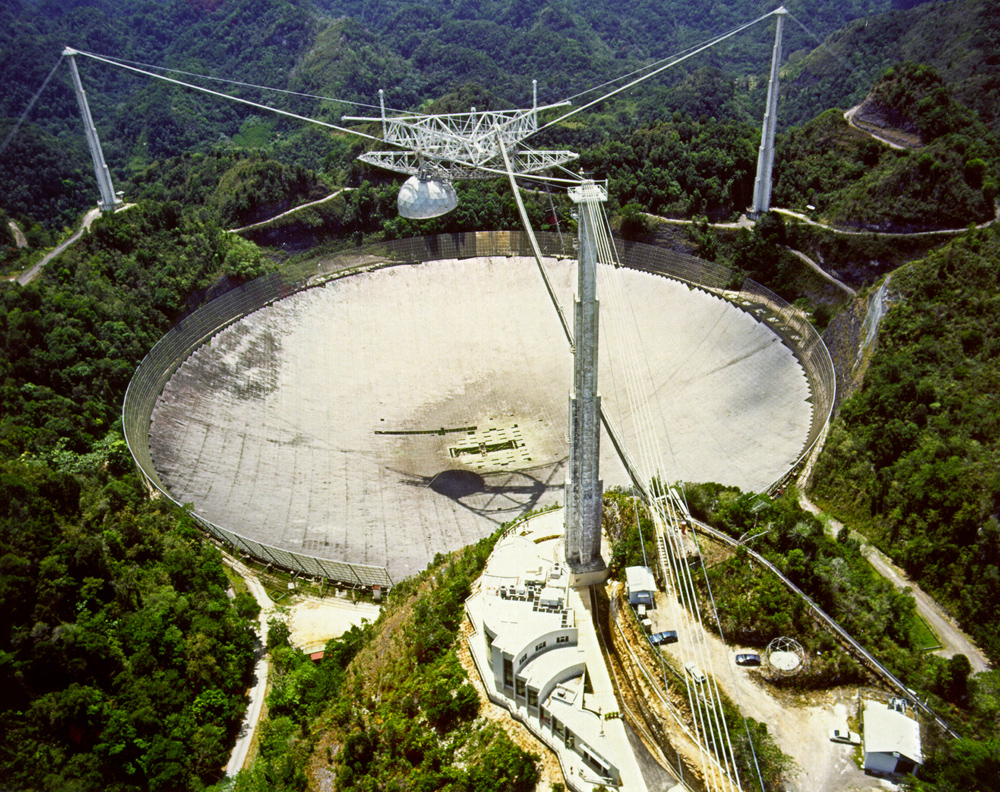Arecibo Observatory weathers Tropical Storm Isaias to track potentially dangerous asteroid
Meet asteroid 2020 NK1.

A famed radio telescope overcame Tropical Storm Isaias to determine the threat level of a space rock zooming by Earth. In both cases, happily, everything worked out just fine.
Astronomers with the Arecibo Observatory in Puerto Rico weresupposed to observe the close-flying asteroid 2020 NK1 from July 30 to 31, when the object — which scientists first spotted in early July — would be within close range (5 million miles or 8 million kilometers) of the radar-probing telescope. Unfortunately, that timing fell exactly when Tropical Storm Isaias was supposed to crash into Puerto Rico. Arecibo, which was hit hard by Hurricane Maria in 2017 and closed due to an earthquake this past winter, shut down once again to minimize harm to their staff and observing equipment.
Parts of the island did lose power from Isaias, but Arecibo was not impacted as badly. This allowed the telescope to safely swing into action after the tropical storm came through.
Related: Satellites watch Tropical Storm Isaias batter eastern US
"Fortunately, the storm passed quickly without damage to the telescope or the radar system, and the maintenance and electronics teams were able to activate the telescope from hurricane lockdown in time for the observations,” Sean Marshall, an observatory scientist who led the team during the radar observations of 2020 NK1, said in a statement from the University of Central Florida, which manages Arecibo.
The observing team watched the asteroid for 2.5 hours to determine how likely it is to hit Earth. Before the observations to improve knowledge of its orbit, the asteroid was thought to have a 1-in-70,000 chance of impacting the Earth between 2086 and 2101, making it a priority observation. It was spotted in early July by astronomers with the Asteroid Terrestrial-impact Last Alert System survey team at the University of Hawaii.
The new work shows that the asteroid "is not expected to get close enough to Earth to pose a danger in the future," Arecibo officials said in the same statement. The closest approach of 2020 NK1 will be in 2043 when it will pass by Earth at a distance of 2.25 million miles (3.6 million km), or the equivalent of more than nine times the distance between the Earth and the moon.
Breaking space news, the latest updates on rocket launches, skywatching events and more!
The new observations show "that we have very quick response times and high-precision range, motion, and-size measurement capabilities in spite of storms, the COVID-19 pandemic and earthquakes with which Puerto Rico has dealt with this year," Anne Virkki, head of Arecibo's planetary radar group, said in the same statement.
The radar images also revealed the size and shape of the asteroid, which is described as elongated with its longest dimension at 0.6 miles (nearly 1 km). The asteroid's composition was not disclosed in the statement; more than 75 percent of known asteroids are carbonaceous, with the rest being silicaceous or metallic.
NASA and numerous partner observatories keep a close eye on the sky for potentially hazardous asteroids, and have catalogued many thousands of space rocks in their decades-long effort. NASA's Planetary Defense Coordination Office also is working with United States and international entities on ideas to move or break up asteroids that pose an imminent problem to Earth. Fortunately, no immediate threats to Earth are known, but scientists remain on the lookout just in case.
Follow Elizabeth Howell on Twitter @howellspace. Follow us on Twitter @Spacedotcom and on Facebook.

Elizabeth Howell (she/her), Ph.D., was a staff writer in the spaceflight channel between 2022 and 2024 specializing in Canadian space news. She was contributing writer for Space.com for 10 years from 2012 to 2024. Elizabeth's reporting includes multiple exclusives with the White House, leading world coverage about a lost-and-found space tomato on the International Space Station, witnessing five human spaceflight launches on two continents, flying parabolic, working inside a spacesuit, and participating in a simulated Mars mission. Her latest book, "Why Am I Taller?" (ECW Press, 2022) is co-written with astronaut Dave Williams.

